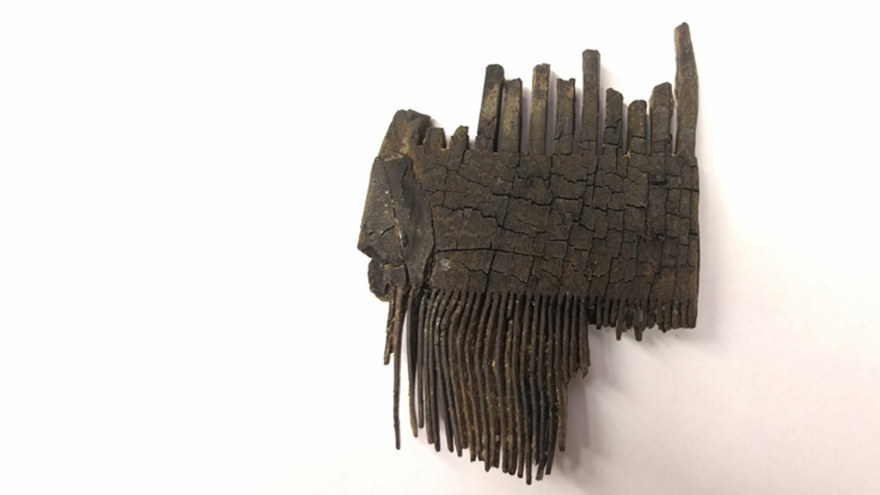Conservation process of a louse comb

This particular louse comb was found at the site of Nya Lödöse in Gothenburg, Sweden, a town existing between 1473 and 1624. The comb measures approximately 5 × 7 centimeters, and is made of bone. It had disintegrated into several parts when it was found, and it is very fragile. It was damaged by fire, which is visible on the cracked and blackened outer layers.
Storage of the comb
Organic materials are prone to alkaline and acidic soil. In an archaeological context, they are best kept in a humid and oxygen free environment. After the comb was retreated by the archaeologists in the field it has been kept in moist soil in a fridge, uncleaned. The moist prevents the comb from drying out and the low temperature is keeping away biological attacks on the material.
The conservation process
On starting conservation treatment, the comb has been allowed to gradually dry. This was done in the fridge as well. A rapid change of environment and a fast drying out would have left the object deformed and severely cracked . After drying the object was treated with Klucel, a water-based cellulose substance. Klucel provides inner strength to degraded cell structures. Loose parts were fixated or glued together with Paraloid, an acrylate based resin.
Post conservation
The space between the teeth of the comb was not cleaned. It might still hold traces of lice or microorganisms which can hold important contextual information for the archeologist or historian! After conservation an appropriate box for storage was made.
You might be able to see the comb in a future exhibition or else it may turn out to be an important part in future research projects!
Read more about the war on vermin through the centuries
Read more on how archaeological louse combs were manufactured
Read more about louse combs in an archaeological context